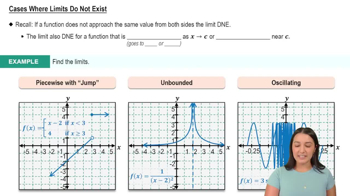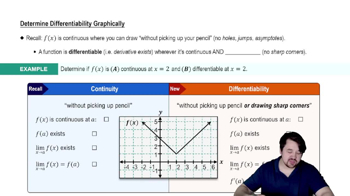Using the Formal Definitions
Use the formal definitions of limits as x → ±∞ to establish the limits in Exercises 91 and 92.
If f has the constant value f(x) = k, then lim x → ∞ f(x) = k.
 Verified step by step guidance
Verified step by step guidance Verified video answer for a similar problem:
Verified video answer for a similar problem:



 6:47m
6:47mMaster Finding Limits Numerically and Graphically with a bite sized video explanation from Patrick
Start learning